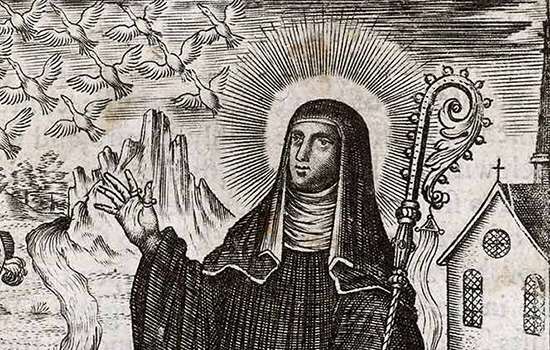UNLIMITED ACCESS TO OVER 400 HISTORIC PLACES
Live and breathe the story of England at royal castles, historic gardens, forts & defences, world-famous prehistoric sites and many others.
There were many different communities or ‘orders’ of monks and nuns in medieval Britain. Many of these orders followed the Rule of St Benedict, which was first adopted in England in the 7th century.
Many of the monastic sites in our care were once home to Benedictine, Cluniac, Cistercian and Carthusian monks. Watch this animation to find out more about the development of these four major orders and how their beliefs shaped their religious buildings.

To many of us, visiting the ruin of a monastery is a peaceful, contemplative experience. But are we right to associate monastic sites with the absence of noise?

Unlike other medieval monks, Carthusians lived as near-hermits, spending most of their time alone in their cells. Find out more about their daily lives.

Discover what happened to the many thousands of monks and nuns whose lives were changed forever when, on the orders of Henry VIII, every abbey and priory in England was closed.

Read about the eyewitness account that reveals the speed and scale of the destruction of Roche Abbey during Henry VIII’s Suppression of the Monasteries.

Find out how Battle Abbey, built on the site of the Battle of Hastings, has its origins in William the Conqueror’s bloody victory over King Harold.

Discover how a decision was made at Whitby Abbey in AD 664 that became a landmark in the history of Christianity in England.

From visiting taverns to singing at the wrong pitch, the monks of Hailes Abbey couldn’t always meet the high standards expected of them.

Learn about the monk from Rome who became the first Archbishop of Canterbury and kick-started the Anglo-Saxons’ conversion to Christianity.

Four of the monastic sites English Heritage cares for were once home to nuns. Their histories illuminate the important role of nuns and nunneries in medieval English monasticism.

Strict rules were in place to ensure that monks had minimal contact with women in medieval monasteries. But could they even have functioned without women?

Haughmond Abbey in Shropshire provides strong evidence of how much women were accepted and valued for their role in Christian belief and practice, even in a male monastery.

As abbess of Whitby in the 7th century – a ‘double monastery’ for both nuns and monks – Hild led one of the most important religious centres in the Anglo-Saxon world.

Find out what we know about St Milburga, Anglo-Saxon princess, abbess and miracle worker, who ruled over a community of both monks and nuns at Wenlock in Shropshire.

Discover the history of this 12th-century convent for Augustinian nuns, which later achieved fame when Charles II took refuge there in 1651 after the Battle of Worcester.
Many of the properties in English Heritage’s care house collections of international significance. Explore some of the unique survivals excavated at our monastic sites, and learn more about the history of English monasticism.
Search our properties and plan your visit to one of the many monastic buildings in English Heritage’s care.
Search monastic sites